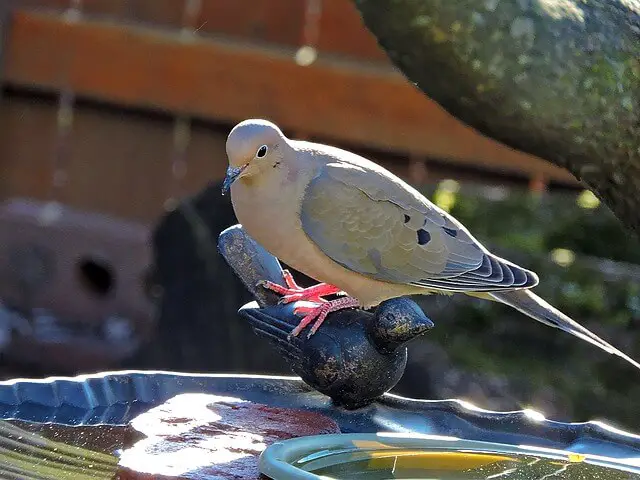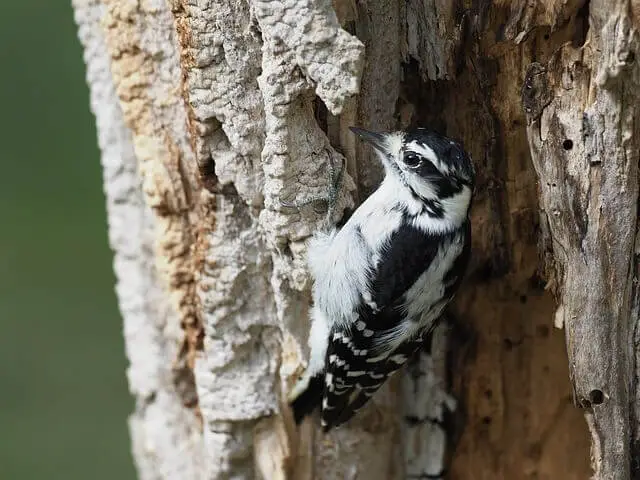Embark on a journey through New York’s diverse landscapes with our ultimate guide to the 41 most common bird species! From the iconic American Robin to the charming Black-capped Chickadee, New York’s forests, parks, and urban areas host a rich tapestry of avian life.
In this comprehensive guide, we’ll uncover the unique characteristics, habitats, and behaviors of each species, offering valuable insights for bird enthusiasts and nature lovers alike.
Table of Contents
- 1 Most Common Birds in New York
- 1.1 American Robin
- 1.2 Northern Cardinal
- 1.3 American Crow
- 1.4 Blue Jay
- 1.5 Black-capped Chickadee
- 1.6 American Goldfinch
- 1.7 Mourning Dove
- 1.8 Downy Woodpecker
- 1.9 Song Sparrow
- 1.10 European Starling
- 1.11 Red-bellied Woodpecker
- 1.12 White-breasted Nuthatch
- 1.13 Tufted Titmouse
- 1.14 House Sparrow
- 1.15 Dark-eyed Junco
- 1.16 Gray Catbird
- 1.17 Common Grackle
- 2 Frequently Asked Questions
- 3 Author
Most Common Birds in New York
American Robin
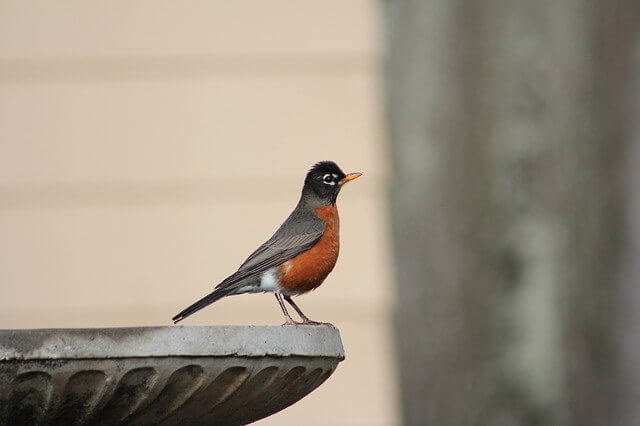
American Robin is one of the best known of all the wild birds in New York City and other areas. You can see them flying around in large numbers during the spring and summer months, especially near the harbor area where many boats come in and out and many types of birds feed on the water.
The best place for you to spot an American Robin is along the East River in Manhattan and the West River in Brooklyn.
You can find these wonderful birds nesting in trees and on building ledges in many of the parks in New York City, as well. In the winter months you may also find the birds nesting on ledges, under eaves or on top of roofs.
- Color: Mostly brown on the back with an orange-colored breast, yellow bill
- Habitat: Wooded areas, backyards, parks, fields
- Range: USA, Canada, Mexico
- Size: 12 – 16″ inches in length
- Weight: 72 – 95 grams
- Diet: Fruits, berries, and insects (earthworms, beetles, caterpillars etc.)
- Family: Turdidae
- Genus: Turdus
Related Post:
Northern Cardinal
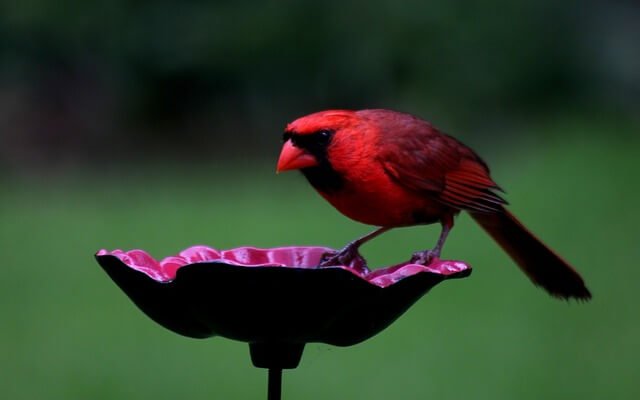
The Northern Cardinal is seen in many parts of the North American continent, including Alaska and Canada, and can be seen for long periods of time.
The most striking feature of seeing the Northern Cardinal in New York is its distinctive red color. It can be found throughout all of New York.
The bird is also a winter visitor and will be seen around New England during the months of May, June, July, and August. The bird will usually migrate southward to warmer climates by the end of September.
The bird has a habit of building large nests on islands in lakes or ponds, and in trees near roadways and homes.
- Color: Mostly red throughout, with a black mask on the face
- Habitat: woodlands, gardens, parks, backyards, and wetlands
- Range: USA, Canada, Mexico
- Size: 8.2 – 9.3″ inches
- Weight: 33 – 65 grams
- Diet: Fruits, berries, and insects (grasshoppers, beetles, snails, cicadas)
- Family: Cardinalidae
- Genus: Cardinalis
Related Posts
American Crow

American Crow are common in New York, and are often times found in large numbers. They are often times found in urban areas of the United States. The American crow is commonly found in a wide variety of places such as in the backyards, around trees and even in urban environments such as parks.
You may also find them nesting in other types of buildings such as old buildings and barns. Their presence in urban areas can be seen from the way that they roost and nest.
They like to sit near trees, but they can also be found nestling on top of houses. When it is nighttime the most popular places for the birds to roost are along fences, trees, shrubs and on poles.
- Color: Black
- Habitat: Open country, farms, parks, woodlands, towns, cities
- Range: Canada, USA, Mexico
- Size: 16 – 21″ inches in length
- Weight: 315 -620 grams
- Diet: invertebrates, carrion, seeds, eggs fish, grains, mice, frogs, and other small animals.
- Family: Corvidae
- Genus: Corvis
Related Posts:
Blue Jay
The blue jay lives through much of the central and eastern United States, though migratory populations can be seasonal as well. Blue jays are considered to be one of the easiest to find. Most birders have at least one species of this bird in their backyard bird feeders. Blue Jays are very colorful and are easily recognized by their brilliant blue coloration.
The migration of blue jays begins from April in the upper Midwest and March in the west. As migratory patterns shift, blue jays have been found at all latitudes in North America. However, blue jays prefer moving eastward before moving westward during late summer and early fall.
The Blue Jay makes its home in Central Park and the best place to see it is during the late fall and early winter months. You will probably see this bird at least two times a year at different times of the year.
- Color: Has a blue crest on its head, blue wings, back, and tail, and has a white face and belly.
- Habitat: Deciduous and mixed forests, mixed woodlands, backyards, parks
- Range: Southern Canada, Eastern and Central United States, Florida and Texas
- Size: 8 – 12″ inches
- Weight: 70 – 100 grams
- Diet: Nuts, seeds, caterpillars, grasshoppers, and beetles
- Family: Corvidae
- Genus: Cyanocitta
Related Post :
- How to Attract Blue Jays to your Yard?
- Do Blue Jays Migrate? The Truth
- What do Blue Jay Eat – All The Facts
Black-capped Chickadee

Black-Capped Chickadee is a small but beautiful bird species live in the area along the Hudson River in New York State. The Black-capped chickadees have been nesting on the banks of the Hudson River since the late 1980s, and they are said to live from June through November in this region.
Although they are said to be very easy to spot, it may take a bit of patience and determination to spot one. It is best to check out the area before attempting to attract a Black-capped chickadee.
However, they often feed on plants in open areas like fields, parks and cemeteries during the winter months. They can be found in most parts of North America and southern parts of Central and South America.
- Color: A black cap, white on face, white/reddish-brown flanks
- Habitat: Deciduous and mixed forests, backyards, parks
- Range: USA and Canada
- Size: 11.5 -16 cm length
- Weight: 8 – 15 grams
- Diet: Insects, seeds, berries
- Family: Paridae
- Genus: Poecile
Related Post: How Do I Attract Chickadees To My Yard?
American Goldfinch
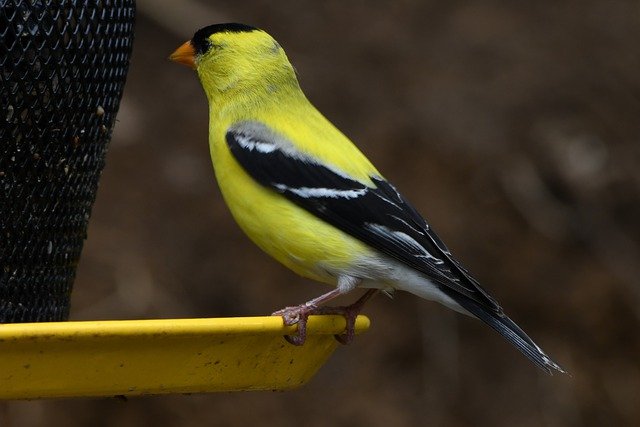
Many tourists visit New York City each year and many of these tourists will be interested in viewing the American Goldfinch. The American Goldfinch is one of the most common birds that are found in the city.
The American Goldfinch is not only very common in the city, but it is also very easy to find in the many parks and public areas throughout the city.
It is possible to view the American Goldfinch from the sidewalk or even from an alley. The Goldfinch can also be seen in a variety of other locations, including gardens, parkways, and even along highways.
- Color: It has a yellow face, neck, and underside, black wings with white bars
- Habitat: Deciduous conifers, and forests, thickets, gardens, roadside, grasslands, meadows
- Range: Canada, USA, and Mexico
- Size: 4.3 – 5.5″ inches length
- Weight: 12 -18 grams
- Diet: Grass, dandelions, chickweed, sunflowers and ragweed, thistle, red alder, birch, spruce seeds
- Family: Carduelinae
- Genus: Spinus
Related Post: American Goldfinch Interesting Facts
Mourning Dove
The Mourning Dove is known as the rain bird, the mourning dove or simply the turtle bird, and was previously called the Carolina bird and Carolina turtledoves. They are very colorful even in winter, but they still are easily spotted even in early spring with their distinctive, large eyes and bill.
The Mourning Dove does not usually fly very far when active; it is more often found in and around trees, shrubbery, ponds, coves, and other bodies of water. It can also be found in the forests, and bushlands.
- Color: Light gray-brown and lighter and pinkish below. Black spots on the wings, with a small dark bill.
- Habitat: Open habitats, prairie, wooded areas, urban areas, farms, and grassland.
- Range: USA, Canada, Mexico, Central America, Greater Antilles
- Size: 12″ inches length
- Weight: 112 – 170 grams
- Diet: Rapeseed, corn, millet, safflower, sunflower seeds, pokeberry, sesame, and wheat.
- Family: Columbidae
- Genus: Zenaida
Related Posts: 10 Facts about Mourning Doves
Downy Woodpecker
A downy woodpecker is commonly found throughout the United States and Canada. A downy woodpecker often makes nests in shrubs, such as oaks, maples, spires, and Douglas fir,
They are active in the morning when they fly around and then feed on different types of seeds, fruits and insects. this bird is one of the most beautiful of all birds and is a favorite among bird watchers and ornithologists from all over the world.
- Color: Black with a white throat, belly, and back. White spots on wings
- Habitat: Deciduous forests and thickets, roadside, grasslands, backyards, parks
- Range: Canada, USA, and Mexico
- Size: 5.5 – 7.1″ inches in length
- Weight: 20 – 33 grams
- Diet: East mostly insects such as ants, beetles, gall wasps, and caterpillars
- Family: Picidae
- Genus: Dryobates
Related Posts: How to Attract Downy Woodpeckers: Expert Tips!
Song Sparrow
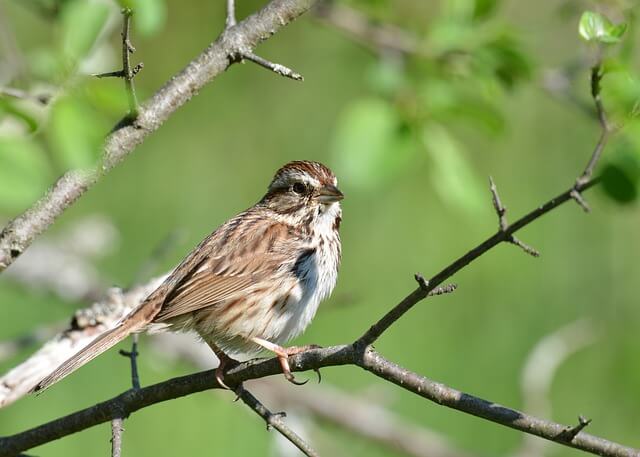
In its natural habitat it can be found in the eastern United States and along the coasts of Central and South America. The Song Sparrow is a very social bird, which means that it congregates in large groups to mate and nest.
There are some species that live on their own in a burrow, while other birds in the same colony of birds can share the burrows. It is also a migratory bird which means that it moves from one place to another to feed on food sources, such as insects, worms and berries.
- Color: Gray head, white cheek, a black bib, rufous neck
- Habitat: Urban centers, farms, backyards, edges, yards, and parks
- Range: Europe, Mediterranean, Asia, Australasia, Africa, and the Americas
- Size: 5.5 – 7.0″ inches
- Weight: 25 – 40 grams
- Diet: Grains, seeds, and insects
- Family: Passeridae
- Genus: Passer
Related Post: How to Attract Sparrows to your Backyard
European Starling
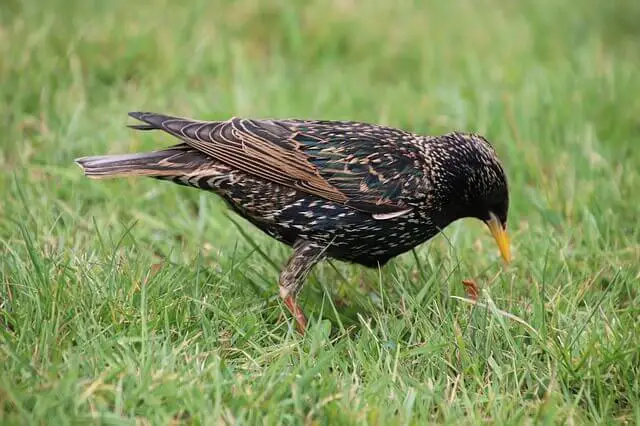
In the United States the common European starling, sometimes referred to as the blue starling. They are particularly well adapted to flying overland by using their feet and strong beaks for grasping on to submerged objects like leaves, branches, etc.
They feed in flocks, and so they are able to fly with other birds close to their nest. Starlings feed on various small invertebrates and insects including moths, mosquitoes, flies of many types. They are also known to carry a variety of parasitic wasps, spiders, and even aphids to their nests.
- Color: Black with glossy green and purple iridescence plumage, yellow beak.
- Habitat: Forests, woodlands, backyards, edges, yards, and parks
- Range: North America, Europe, Africa, India, China, Middle East.
- Size: 7 – 9″ inches long
- Weight: 60 – 100 grams
- Diet: Insects (ants, beetles, invertebrates), fruits, seeds, berries
- Family: Picidae
- Genus: Colaptes
Related Posts: How To Attract European Starlings To Your Yard Fast?
Red-bellied Woodpecker
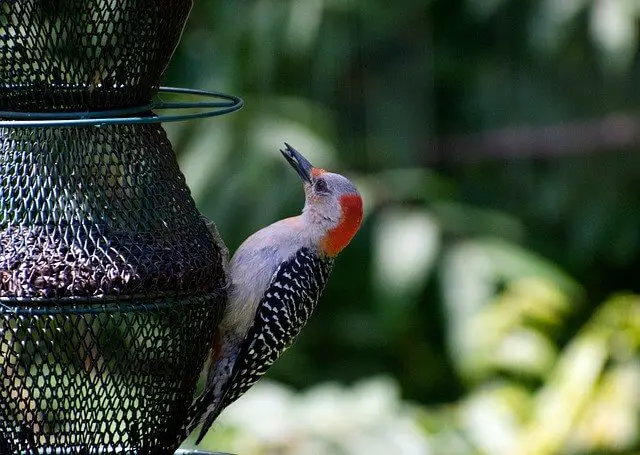
The Red-bellied woodpeckers in can be found nesting in Central Park in the trees. This breed tends to nest in trees that are either small, or in areas where other species have already nested, such as in hollowed-out logs. They are also known to nest in shrubs and plants on the ground and above ground.
The Central Park red-bellied woodpeckers are also one of the rarest species of birds in New York City, and this means that it is highly prized by bird enthusiasts who wish to have them as pets or for studying them in their natural habitat. The birds are often found hanging from the walls of tall buildings, as well as in parks and other locations.
If you live in New York and would like to get close to one of these birds, you may want to take a stroll through Central Park with binoculars and a camera.
- Color: Gray on body and face and underparts. Black and white pattern on wings, back, and tail.
- Habitat: Forests, backyards
- Range: Southern Canada, Eastern United States, Florida
- Size: 9 – 10.6″ inches long
- Weight: 56 -91 grams
- Diet: Insects, small fish, oozing sap, tree frogs, and eggs of small birds.
- Family: Picidae
- Genus: Melanerpes
White-breasted Nuthatch
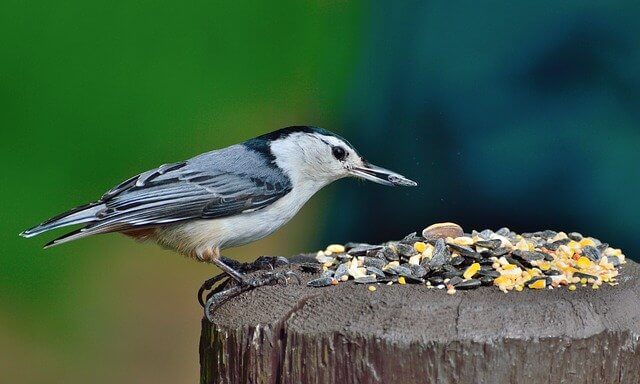
The white-breasted nuthatch is a native of Europe but has been introduced to the United States in the late 1800s as a bird for ornithology. As an ornithologist, you can enjoy observing the various types of birds in the United States and in other countries.
It can be seen in urban areas, where they feed on the urban waste. It can also be seen nesting in small shrubs on the sides of roads. It will even nest in your roof or in hollowed-out trees.
- Color: A white face, flanks, and chest. It has a black cap on its head a bluish-gray upper and a brown lower belly
- Habitat: Deciduous forests, conifers, roadside, rivers, backyards, parks
- Range: Southern Canada, USA
- Size: 5.9″ inches in length
- Weight: 20 grams
- Diet: Acorn nuts, hickory nuts, ants, caterpillars, scale insects, pine weevils
- Family: Sittidae
- Genus: Sitta
Related Post: How to Attract Nuthatches to your Backyard?
Tufted Titmouse

The Tufted Titmouse is a beautiful small-sized bird that lives in Central and Southern parts of North America. It can be found in a variety of different habitats including forested areas, grasslands, and coastal areas.
They are considered as the most common in New York State, and they are commonly observed in cities such as New York City, Buffalo, and Utica. For bird watchers in New York, this bird can provide great opportunities for viewing as tufted titmouse can be seen easily if you are knowledgeable.
- Color: Gray upper body, white chest and belly, with a tufted gray crest on the head.
- Habitat: Deciduous forests, river basin, backyards, swamps
- Range: Canada, USA, and Mexico
- Size: 5.5 – 6.4″ inches
- Weight: 18 – 26 grams
- Diet: Nuts, insects, berries, seeds small fruit, and snails
- Family: Paridae
- Genus: Baeolophus
Related Post: How to Attract Tufted Titmouse to my Yard?
House Sparrow
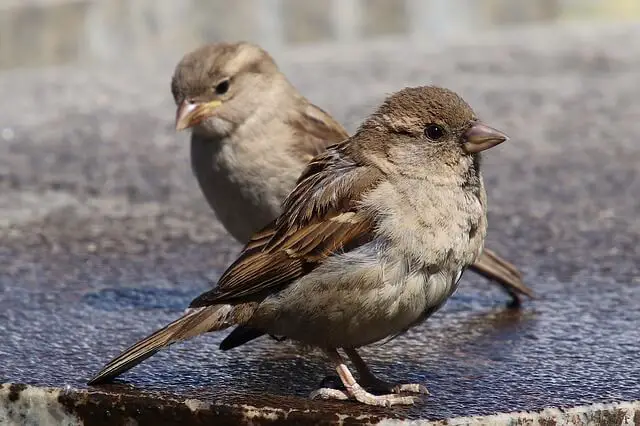
The House Sparrow is a member of the passerine group of birds, adapted to long flights over land or over water. It is usually a small bird with a small body and a large mass of about 24 g, and it has a standard size of up to 15 cm.
The common species of this species are found in many parts of Europe, the United States and Asia. It has been known to migrate southward from its winter breeding ground in northern Africa. In North America, House Sparrows is found from New Hampshire southward and as far east as California, though their main breeding areas are still found in Northern Africa, the United States and Central America.
- Color: Gray head marking, a reddish-brown back, and gray underparts
- Habitat: Urban centers, Rural, suburban areas, gardens, edges, and parks
- Range: North America, Central America, South America, Africa, Australia, New Zealand
- Size: 5.5 – 7.1″ inches in length
- Weight: 25 – 39 grams
- Diet: Insects, beetles, caterpillars, aphids,, grasshoppers, crustaceans, earthworms, vertebrates
- Family: Passeridea
- Genus: Passer
Related Post: How to Attract Sparrows to your Backyard
Dark-eyed Junco
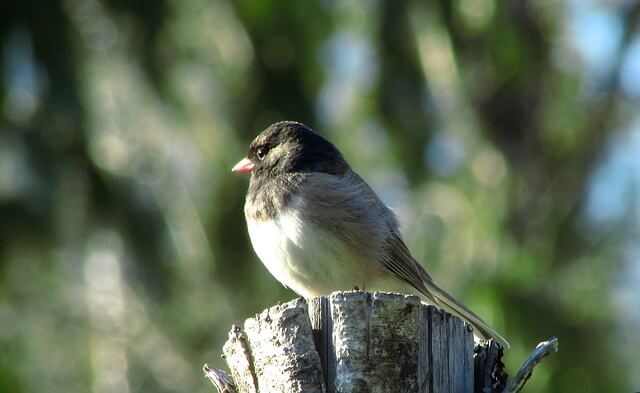
Dark-eyed Junco are commonly found throughout the temperate regions of North America, ranging from Alaska to New Mexico, and from the southern to the central parts of the United States. This bird’s ranges span much farther than those of most other Junco’s. The bird’s range is also quite diverse, with nearly 90% of its breeding range residing within 200 miles of the equator.
It is also seen on islands in tropical and subtropical areas of the Amazon River basin. The Dark-eyed Junco has a life cycle that can last for about fourteen years. They spend several months of the year in the southern part of the United States in their winter quarters before returning south to their wintering grounds.
- Color: Gray head, neck, breast, gray/brown backs and wings, white underside
- Habitat: Wooded areas, forest edges, roadsides, gardens, parks.
- Range: USA and Canada
- Size: 5.1 – 6.9″ inches
- Weight: 18 – 30 grams
- Diet: Seeds, insects, and arthropods
- Family: Passeriformes
- Genus: Junco
Related Post: Interesting Dark-eyed Junco Fun Facts
Gray Catbird
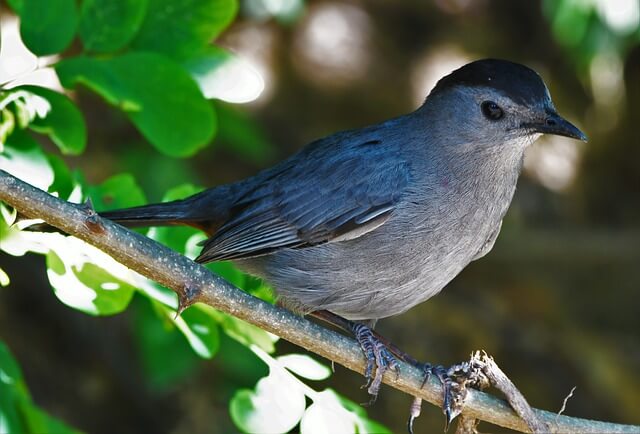
The Gray Catbird is a medium-sized North American and Central America perching bird. Most gray catbirds spend much of their time in trees, but they can also be found in other habitats, including grasslands, woodlands, and deserts.
They usually nest in tall grasses close to water, and they feed mostly on seeds, insects, carrion, and other small animals. They are good fliers, able to fly well in a variety of weather conditions. In spring, they breed in large numbers, but as the summer progresses they become sedentary. At night, they build a dark roost in trees where they remain all winter.
- Color: Mainly Gray with black on tail and head, white accents on the body
- Habitat: Woodlands, marshes, meadows
- Range: East of the Canadian Rockies, Canada, USA, Mexico, Central America, and the Caribbean
- Size: 8 – 9.5″ inches
- Weight: 23 – 57 grams
- Diet: Fruits, berries, earthworms, beetles, bugs, ants caterpillars, grasshoppers, moths.
- Family: Mimidae
- Genus: Dumatella
Common Grackle

The most common grackle is an extremely large interim commonly found in numbers throughout the North American continent. First identified in 1759 by Carl Linnaeus, there are now three subspecies of this bird. The primary difference between these subspecies lies in their coloration.
This bird has been seen to fly in and out of houses, trees and other buildings. So, what does a grackle do for a living? Well, cracks have been found eating seeds of wild oats as well as various types of grains.
What makes a grackle so unique is their amazing ability to fly. This bird is very quick and can travel extremely quickly and be found almost everywhere in New York.
- Color: Black overall with a blue, and purple iridescence.
- Habitat: Woodlands, marshes, meadows, parks, backyards, and fields
- Range: East of the Canadian Rockies, Canada, and the United States
- Size: 11 – 13″ inches length
- Weight: 75 – 143 grams
- Diet: minnows, eggs, berries, seeds, grain, insects, frogs, mice
- Family: Icteridae
- Genus: Quiscalus
Newly Added Common Backyard Birds (Updated):
- Red-winged Blackbird
- Northern Flicker
- House Finch
- Rock Pigeon
- Common Yellowthroat
- Carolina Wren
- Chipping Sparrow
- Hairy Woodpecker
- Tree Swallow
- Northern Mockingbird
- Yellow Warbler
- Cedar Waxwing
- Barn Swallow
- Eastern Phoebe
- Brown-headed Cowbird
- Baltimore Oriole
- Yellow-rumped Warbler
- Red-eyed Vireo
- House Wren
- Eastern Towhee
Frequently Asked Questions
What kind of Hawks live in New York?
In New York, there are seven different species of hawk that can be found living and hunting here. These include: Sharp-Shinned Hawk, Cooper’s Hawk, Northern Goshawk, Red-Shouldered Hawk, Broad-Winged Hawk, Red-Tailed Hawk, Northern Harrier and Rough-Legged Hawk.
Are there Blue Jays in New York?
The Blue Jay is one of the most commonly seen birds in New York, with a 44% frequency of occurrence. This species ranges from Alaska to Florida and up into Canada, so it’s not surprising that they are found in New York.
What is the most common bird in New York City?
There are a lot of different types of birds in New York City, but the most common bird is the Blue Jay. The top 5 most common birds in New York City are: Blue Jay with 44% frequency of occurrence, American Robin at 43.16%, Northern Cardinal at 42.85%, Black-capped Chickadee at 39.62% American Crow at 38.50%.
What are the little birds in NYC called?
These tiny creatures that flock to the trees and shrubs of New York City can be hard to identify. The most common little birds you’ll see is a sparrow, which is actually not native to North America, but rather originated from Europe. These tiny birds have a distinctive brown head and white chest patch.
What birds chirp at night in New York?
American Robins are one of the few birds that chirp at night in New York. They make a series of short, soft whistles to attract mates and ward off other males.
Related Post: 22 Backyard Winter Birds in New York for 2022 (Detailed)



